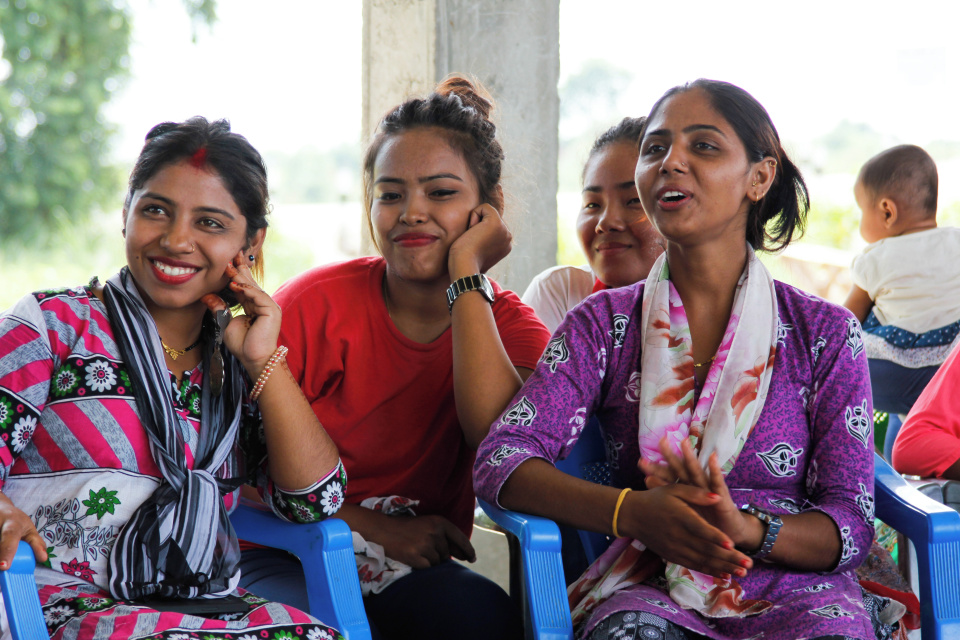The level of resourcing available to tackle GBV is vastly incommensurate with the scale of the need, for example just 0.3% of ODA is specifically allocated to target GBV. The UN Trust Fund to End Violence Against Women (UNTF) has received $2.9 billion worth of requests over the last four years, yet only had the resources to support 4% of this demand. This raises the question of whether we would be in a different position today if the field had been able to mobilise the resources to meet the demand.
Supporting the field’s growth and ability to work at scale and generate the resources for this requires looking beyond the roles of individuals, organisations, and projects, and instead at how to build a healthy ecosystem. This must include WROs but also academics, private sector, and leaders and allies in government. Moreover, while money is important, it needs to spent well, support a joined-up strategy of action, and leverage and tap into other resources.
The GBV Ecosystem – the ‘Missing Middle’
Gaps in the current funding ecosystem are undermining the field’s ability to transition to scale. Of particular concern is the lack of resources for medium sized WROs/CSOs that have the skills and expertise to implement primary prevention at scale, and for “scaffolding organisations” that are needed to build and sustain the field over time. This was referred to as the ’missing middle’.
Many of the organisations that form part of the GBV ecosystem are not fit-for-purpose to bridge the gap of the missing middle, with the majority of women-led organisations in the Global South being too small to implement programming at scale. A first step is to support a subset of WROs to become leaders in the field of violence prevention, capable of delivering effective GBV prevention programming at scale. Medium sized organisations working in other sectors could also play a beneficial role for GBV prevention – this could be incentivised through funding collaboration between CSOs with sector-specific expertise and groups with gender and violence expertise.
There is also a need for investment in the scaffolding organisations that help to strengthen and build a holistic ecosystem for the field of GBV. Fields that surpass GBV in maturity and resourcing, such as education and HIV/AIDS prevention, have resourced and structured associations that promote networking, strategic collaboration, and knowledge exchange. Whilst the field of GBV is too small for activities of this nature at scale, there are organisations that can support this, such as SVRI and the Prevention Collaborative.
The creation of a new fund and/or mechanism was considered as one possible option for addressing the Missing Middle.
Diversifying funding streams
Bilateral funding mechanisms are often inaccessible to women’s rights organisations and high standards of due diligence can restrict grassroots organisations from being able to apply for funds. The same challenges can be seen within the UN system. Bilateral funding is also contingent on political will, is often unable to be mobilised at pace, and can be too large to be easily absorbed by smaller organisations directly. This creates a significant hurdle to developing a healthy women’s rights movement.
The process of resource mobilisation should be cemented within feminist principles. Flexible and core funding is a key means to ensure WROs are able to deliver on their own mandates rather than being redirected to donor priorities and are able to develop as organisations. Feminist funding mechanisms, such as the Equality Fund, have helped to shift away from priority setting solely in the global North towards rooting this instead in demand from frontline actors.
To expand resources for GBV prevention, it is important to mobilise funds beyond those traditionally committed to women’s rights. Through diversification of funding streams, including by developing new partnerships for cross-sector collaboration, the GBV field can move beyond a reliance on competitive contracts from limited sources that risk reinforcing power imbalances. This can be done by thinking more creatively about incentivising collaboration across sectors such as GBV and education, tech and climate, and through strategic advocacy to influence large education, climate and other funds to prioritise GBV. There is also the opportunity to look at mobilising funds from alternative sources, such as inheritance and private wealth.
Resourcing GBV prevention at scale also requires building national systems and capacity and leveraging domestic financing. This calls for a firm understanding of the costs of interventions and the co-benefits of violence prevention to achieve other objectives.
Coordination and advocacy to mobilise resources for ending GBV
Effective mobilisation of resources for ending GBV requires platforms and funding for coordinating priorities, messaging, and advocacy. Further mapping of the ecosystem would aid an improved understanding of how to mobilise resources and the role of each organisation in doing so, including more detail on how resources go across the UN family and the scale of resources dispersed through policy loans (e.g. World Bank etc).
There also needs to be funded opportunities to collaborate and engage in strategic planning, particularly to bring together diverse voices and expertise from survivors, WROs and new partners. Donors are already coordinating through the GBV Funders’ Forum; however, the wider ecosystem requires coordination mechanisms.
